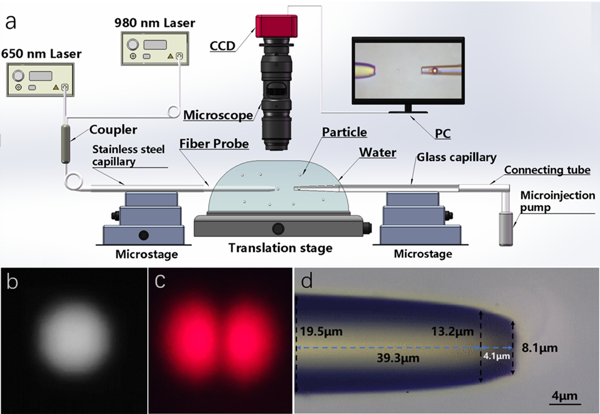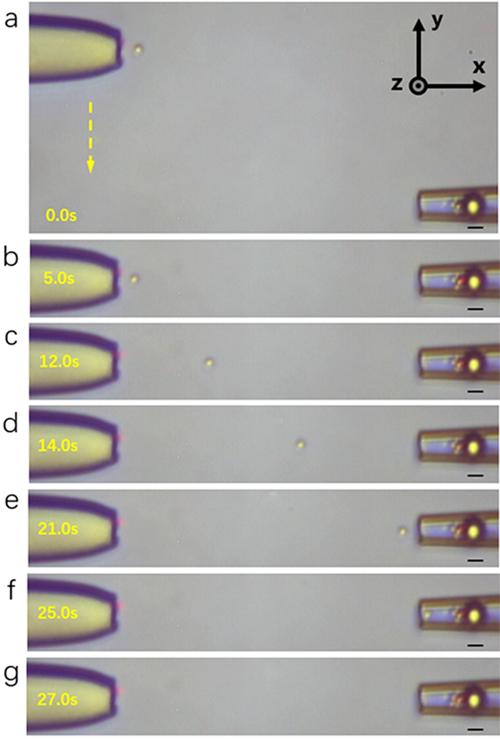Fiber optical tweezers are a tool for manipulating microscopic particles based on the optical trapping effect. Because of its simple and effective structure for achieving particle manipulation, it has now played an important role in several fields such as biology, physics and chemistry. With the booming development of fiber optical tweezers technology, fiber optical tweezers obtained by different techniques and materials have been proposed one after another. They can achieve operations such as particle trapping, orientation and even rotation. And with the rapid development in the field of micro-operation, there has been an increasing demand for the functionality of fiber optical tweezers. Therefore, it is necessary to use fiber optical tweezers to achieve more operational functions and improve their utilization efficiency and integration. In recent years, particle trapping and targeted transport have shown great promise for applications in fields such as biomedicine and physical chemistry. Different strategies have been proposed to perform particle trapping and transport. Because fiber optical tweezers can achieve particle trapping in a small space with greater flexibility, there are great advantages in using it to achieve particle trapping and transport.
Fiber optical tweezers use the strongly focused optical field generated at the end of the fiber exit to achieve particle trapping. Its trapping effect is closely related to the structure of the optical field transmitted in the fiber and the structure of the fiber probe. A variety of mode beams with different optical field structures can exist simultaneously in optical fibers, and the modes have tunable characteristics, while the mode propagated in the fiber depends on the normalized frequency V of the transmitted light wave in the fiber. The V value depends on the size of the fiber core geometry and refractive index profile, and can also be tuned by changing the wavelength of the laser transmitted in the fiber. The higher the V value, the higher the number of modes transmitted in the fiber. Because the mode field structures of different mode beams are different, the optical field structure of the low-order mode beam is more complex and varied than the distribution of the fundamental mode beam. The optical field at the emitting end of the fiber probe also exhibits different focusing characteristics depending on the mode field structure. By combining the modulation of laser modes and the design of fiber probe structures, it is expected that some new fiber optical tweezer devices that can achieve more functions, such as simultaneous particle trapping and transport in a single fiber probe, can be realized.
A single-fiber optical tweezers for particle trapping and transport is demonstrated by Prof. Chunlei Jiang's group from Northeastern Petroleum University in Chinese Optics Letters, Vol. 20, No. 12, 2022 (W. Hao, et al., Multifunctional single-fiber optical tweezers for particle trapping and transport).

Fig. 1 (a) Experimental setup diagram (b and c) Far-field light intensity distribution of LP01 and LP11 mode beams. (d) Microscopic image of fiber probe
They achieved the excitation of LP11 and LP01 mode beams in a single-mode fiber by using laser beams with wavelengths of 650 nm and 980 nm, respectively, and designed the fiber probe as a special flat-facet structure, as shown in Figure 1. Because the optical field structure of the mode beam excited by the laser beam at the two wavelengths is different, the focusing characteristics of the laser beam after passing through the flat-facet fiber probe behave differently. The LP11 mode beam excited by a laser source with a wavelength of 650 nm is strongly focused after passing through the flat-facet fiber probe. The particles can be trapped non-contact. The LP01 mode beam excited by a laser source with a wavelength of 980 nm after passing the flat-facet fiber probe always exhibits a scattering force on the particles. The particles can be emitted in the axial direction. Then, because mode beams of different wavelengths can each perform different functions, they achieved long-distance targeted transport of particles at arbitrary positions by constructing a microcavity with an outer diameter of 6.7 and an inner diameter of 4.2 , as shown in Figure 2.

Fig. 2 Long-distance targeted transport of particles
As a controllable all-fiber integrated device, this device extends the characteristics of single-fiber optical tweezers. It offers new tools for particle sorting, targeted drug delivery and synergistic observation of biochemicals etc. in biology. For the modulation of the modes in the fiber and the design of the fiber probe structure, there are still more degrees of freedom in their combination. Recently, researchers in this group have achieved simultaneous trapping of high refractive index particles and low refractive index particles and flexible manipulation of multiple particles by realizing the excitation of different modes of beams in a single-mode fiber and designing and fabricating fiber probes with different structures. More interesting functions are yet to be developed through a deeper exploration of the modulation of the optical field and the design of the fiber probe structure.


